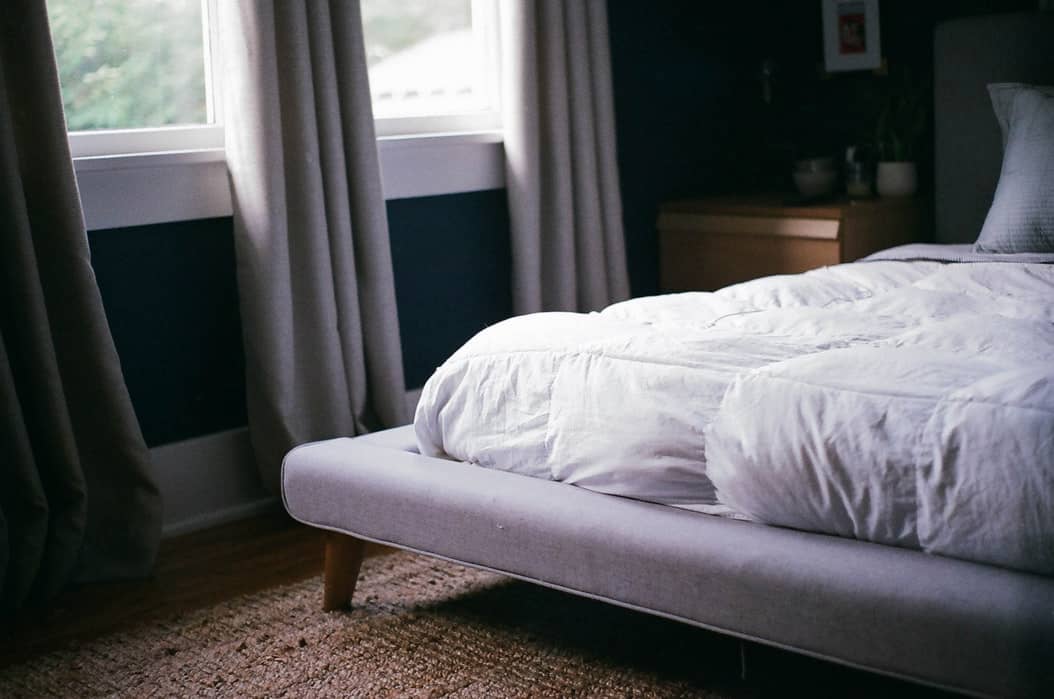* We independently evaluate all recommended products and services. If you click on links we provide, we may receive compensation.
Investing in a mattress is highly expensive which is why you want it to last for long. Cleaning a mattress is thus, very important as it can collect dust mites, dirt, debris, and dead skin. Cleaning them regularly is, therefore, crucial especially if you are someone who has allergies, pets, or someone who eats on the bed. To make it tidy is not very difficult and can be done with simple household supplies. You can also read another article about how long do mattresses last.
This guide recommends thorough and great ways of cleaning a mattress. This step-by-step guide will break down some easy hacks for deep cleaning the mattress. It also mentions some frequently asked questions regarding cleaning a mattress.
- Cleaning The Mattress (Steps 1-5)
- Maintenance Tips (Steps 6-7)
Cleaning The Mattress (Steps 1-5)
1. Vacuum the dust
After dumping the bedding in the washing machine, the first step is to vacuum the mattress so that some of the dust is picked up. Doing this once in a couple of months is recommended, but more often if you have allergies. Make sure to vacuum both the top and bottom, as well as all 4 sides. If you have a crevice attachment, use that to pick up dust from the quilting and edges.
Some vacuums also come with an upholstery attachment, using that is ideal.
2. Remove stains
No matter how careful you are sometimes the mattress ends up getting stained. So, taking out stains from the mattress is necessary as well. Note that you should never directly apply cleaning solutions or water to clean. Memory foam mattresses, for instance, should be protected from water at all costs. Therefore, spot cleaning is better using a stain remover is the way to go about it. The type of stain remover you choose mostly depends on the stains themselves. Most people use enzyme cleaner for biological stains.
Spray the cleaner onto a rag or cleaning towel and blot the stains until they are lifted. The key is to use a tiny amount of solution as you don’t want to moisten the mattress too much. This is a great method for stains like urine, vomit, blood, sweat, etc. You can also make your cleaner by creating a solution of water and dish soap. Alternatively, a solution of hydrogen peroxide and cold water can also be used.
3. Baking Soda
In case you live in an apartment or someplace where you can’t put your mattress in the sun, baking soda is a great replacement. Sprinkling baking soda all over the bed for a few hours or overnight (if you can) helps absorb moisture and odor. The longer you leave it, the better. Open all windows as the sun’s rays help kill germs, mold, and bacteria.
4. Vacuum Again
After the baking soda step, vacuum the mattress again. If your headboard is made of cloth then vacuuming it is also recommended.
5. Clean The Other Side
Once the above steps are complete, flip the mattress so that you can clean the bottom. Repeat steps 1 to 4. Make sure to flip the mattress regularly, even when you aren’t cleaning the mattress. Most people flip it after 3 months, but this is for spring mattresses as they tend to compress with time.
Flip them more often if there are signs of sagging. This allows the mattress to wear out evenly and it also helps it last longer.
Maintenance Tips (Steps 6-7)
6. Mattress Protector
After you have cleaned the mattress, the next step is making sure it stays fresh. Thus, after it is completely dry, cover the mattress using a mattress protector. The protector prevents the mattress from staining, dust mites, and more.
7. Dust Prevention
Cleaning the mattress isn’t easy and so, covering the mattress with fitted sheets keeps the mattress clean. A fitted sheet keeps it away from dust, but that does not mean you don’t regularly change the sheet. Wrapping a mattress with as many layers keeps dust mites out. This is quite helpful for people with allergies and asthma.
Here’s a video that can further help you understand how to clean a mattress:
Frequently Asked Questions – Cleaning A Mattress
Below are some common questions asked about mattress cleaning.
1. Is steam cleaning a better alternative to vacuum-cleaning a mattress?
A steam cleaner is more efficient for mattress cleaning as it reaches areas that are impossible to reach with a vacuum cleaner. The middle and inside parts especially since it’s hard for sun and air to reach those – are better cleaned with a steam cleaner.
2. How often should mattresses be cleaned?
This mostly depends on the level of protection that the mattress has. A good protector keeps dust out and so cleaning can be limited to once in a blue moon. However, cleaning the protector then becomes more important. However, if you don’t use a protector, then vacuuming every month is recommended. The accumulation of dead skin, dust mites, and other allergens can be harmful otherwise.
3. Are essential oils used to freshen mattresses?
While essential oils give a nice fresh smell, they are still oils. Putting oil on the fabric means it will be more prone to dust etc. Moreover, they can also leave stubborn stains. Moreover, the essential oil smell will be temporary and if you are using a protector and sheets then it may not even be worth it. Instead, use baking soda if the mattress has a foul smell.
4. How often should a mattress be flipped?
Flipping a mattress is necessary, no matter what kind of mattress you have – especially if it is the same from both sides. Flipping it every three months is the norm and it helps retain a more even shape this way – this also makes it last longer. Moreover, flipping them prevents the mattress from developing lumps or valleys on the side that is used more.
Additionally, changing the head to foot side is recommended. It also ensures even wearing of the mattress. This is best done when you are replacing the bedding and/or protector. Another indicator for when a flip is needed is when the mattress becomes saggy to touch. However, if it feels saggy despite flipping then perhaps it is time to invest in a new one.

